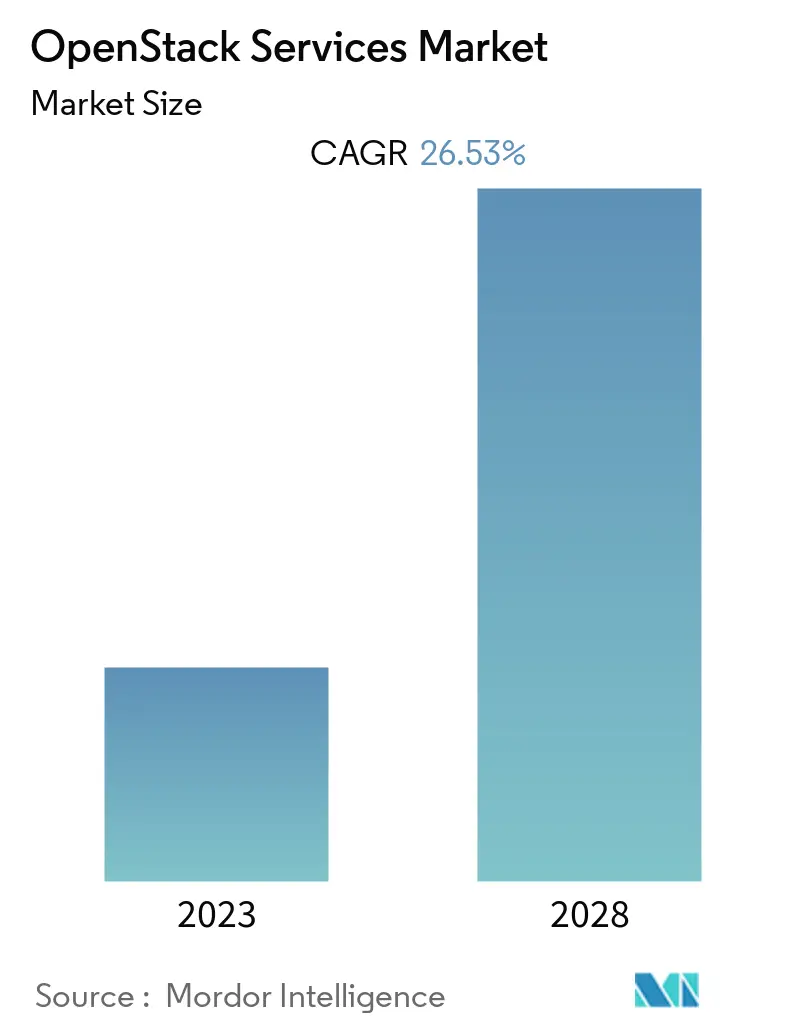HostingRaja’s Guide to OpenStack – Unlocking the Power of Cloud Computing
Table of Contents
OpenStack, a leading force in the world of cloud computing, emerges as a dynamic open-source platform. Its transformative capabilities enable businesses to orchestrate and oversee both private clouds and public clouds. HostingRaja offers a unique guide to OpenStack, providing insights into cloud computing’s scalability, flexibility, and cost-efficiency. Explore core components, master virtual machine management, navigate networking and storage, and delve into automation and security. Whether you’re an IT pro or new to cloud computing, this guide empowers you to harness OpenStack’s full potential and elevate your cloud infrastructure.
Begin your journey towards an agile and efficient cloud ecosystem with our comprehensive guide to OpenStack. Uncover the extensive potentials and advantages presented by cloud computing, setting forth on a voyage of effortless cloud administration and resource enhancement. HostingRaja’s wealth of knowledge and perspectives equips you to make well-informed choices, institute top-tier methodologies, and revolutionize your enterprise through the capabilities of OpenStack. Prepare to embrace the forthcoming era of cloud computing and elevate your company’s IT infrastructure with HostingRaja’s Guide to OpenStack.
what is Openstack:
OpenStack’s structure consists of numerous standalone services, strategically orchestrated to collaborate and deliver a comprehensive cloud computing solution. Its architecture adopts a modular concept, permitting the use of each element individually or in tandem with others to cater to distinct requirements Here are the main components of the OpenStack architecture:
“OpenStack Architecture Overview:
Compute (Nova): Nova stands at the core of OpenStack, serving as the backbone for on-demand creation and management of virtual machines (VMs). It encompasses an API that handles VM lifecycle management, from provisioning to scheduling and termination.
Networking (Neutron): Neutron takes charge of network connectivity and services for VMs, overseeing the network topology in OpenStack deployments. This includes support for virtual switches, routers, firewalls, and other essential networking elements.
Storage (Swift, Cinder, Manila): OpenStack offers a range of storage services, including Swift, an object storage system built for scalability and resilience, and Cinder, a block storage service for persistent VM storage. Manila contributes a shared file system service, facilitating access to shared file system for multiple VMs.
Identity (Keystone): Keystone delivers authentication and authorization services within OpenStack. It accommodates various identity backends, including LDAP, SQL, and Active Directory, and can be integrated with other authentication systems like OAuth and SAML.
Dashboard (Horizon): Horizon delivers a web-based interface for the management of OpenStack services. It features dashboards tailored to compute, networking, storage, and other vital OpenStack components.
Orchestration (Heat): Heat introduces an orchestration engine to OpenStack, allowing users to define templates for infrastructure deployment and management. This includes support for advanced features like auto-scaling and rolling updates.
Telemetry (Ceilometer): Ceilometer steps in to provide monitoring and metering services for OpenStack. It can collect and analyze metrics for compute, storage, and networking services, while also offering billing and chargeback capabilities.
These components collaborate harmoniously to create a comprehensive cloud computing platform suitable for a variety of use cases, whether private, public, or hybrid clouds. The architecture offers flexibility, allowing users to select and configure the necessary components to meet their specific requirements.
OpenStack services:
OpenStack is constructed from a collection of independent services meticulously designed to seamlessly integrate and provide a comprehensive cloud computing platform Here are some of the main OpenStack services:
Nova (Compute Service): Nova forms the core of OpenStack, enabling the dynamic creation and management of on-demand virtual machines (VMs).
Neutron (Networking Service): Neutron orchestrates network connectivity and services for VMs while overseeing the network architecture in OpenStack environments.
Cinder (Block Storage Service): Cinder serves as the magical block storage service, offering persistent storage solutions for VMs. It provides access to volumes that can be attached to VMs, serving as bootable devices or data repositories.
Swift (Object Storage Service): Swift is the sorcerer of object storage, designed for scalability and unshakable durability. It offers a scalable, redundant repository for unstructured data like images, videos, and documents.
Keystone (Identity Service): Keystone acts as the sorcerer of identity, granting authentication and authorization within OpenStack. It supports various identity sources, including LDAP, SQL, and Active Directory, with the ability to integrate with authentication systems like OAuth and SAML.
Horizon (Dashboard Service): Horizon enchants with its web-based interface, allowing enchanters to manage OpenStack services with ease.
Heat (Orchestration Service): Heat conducts orchestration in the OpenStack realm, enabling users to script infrastructure deployment and management using templates.
Glance (Image Service): Glance is the conjurer of image storage, providing a repository for storing and enchanting virtual machine images in various formats, including RAW, VHD, and VMDK.
Ceilometer (Telemetry Service): Ceilometer practices the art of monitoring and metering services within OpenStack.
These components combine their magical powers to craft a comprehensive cloud computing platform, suitable for enchanting private, public, and hybrid cloud scenarios. Their modular and flexible nature allows conjurers to select the components they need and conjure them to their specifications.
Why We Opt for OpenStack:
Open Source Advantage:OpenStack is an open-source cloud computing platform, which means it’s freely available for use, modification, and distribution without limitations. This grants organizations the freedom to tailor and expand the platform to suit their specific needs, avoiding vendor lock-in.
Modular Flexibility: OpenStack is deliberately designed to be modular and flexible. Organizations can select the components they require and configure them accordingly. This empowers them to customize their OpenStack deployment for private, public, or hybrid cloud setups.
Scalability and High Availability: OpenStack is built to handle substantial workloads while ensuring high uptime and performance. This reliability makes it an ideal choice for running critical applications and services.
Support for Various Cloud Models: OpenStack accommodates multiple cloud deployment models, including private, public, and hybrid clouds. This adaptability allows organizations to choose the deployment model that aligns with their objectives and integrate their OpenStack deployment with other cloud platforms.
Community Support: OpenStack boasts a thriving community of developers, users, and vendors. This community provides valuable support, fosters collaboration, and drives innovation. Organizations can tap into this collective knowledge and resources while contributing to the platform’s growth.
Vendor-Neutral: OpenStack is vendor-neutral, granting organizations the freedom to select hardware and software that best fit their requirements without being tied to a specific vendor.
Security: OpenStack comes with built-in security features, including network isolation and encryption, to safeguard against unauthorized access and data breaches.
Automation Tools: OpenStack offers automation tools such as orchestration and deployment, streamlining IT operations and reducing the effort needed to manage cloud infrastructure.
High Availability: OpenStack is engineered to ensure high availability, providing uninterrupted access to applications and services, even in the face of hardware or software failures.
Cost-Efficiency: OpenStack can help organizations cut costs by serving as a cost-effective alternative to proprietary cloud platforms. This is particularly valuable for businesses needing rapid infrastructure scaling or managing unpredictable workloads.
Multi-Tenancy Support: OpenStack accommodates multi-tenancy, meaning it can host multiple users and applications on a single infrastructure. This makes it ideal for service providers offering cloud services to multiple customers.
Continuous Innovation: OpenStack is a dynamically evolving platform, continuously improved by a vibrant community of developers. Organizations can benefit from the latest features and innovations without having to invest in costly proprietary solutions.
Overall, OpenStack stands as a versatile, scalable, and open-source platform for constructing and managing cloud infrastructure. Its array of features and benefits make it an appealing choice for organizations seeking a customizable and dependable cloud computing platform.
Disadvantages of openstack:
While OpenStack has many advantages, there are also some potential disadvantages to consider:
Complexity: OpenStack can be complex to set up and manage, especially for organizations without a lot of experience in cloud computing. This can require additional resources and expertise to ensure that the deployment is properly configured and optimized.
Steep Learning Curve: OpenStack has a steep learning curve, which can make it difficult for organizations to quickly get up to speed and start using the platform effectively. This can require additional training and resources to ensure that the platform is used to its full potential.
Integration Challenges: OpenStack can be challenging to integrate with other technologies and platforms, which can require additional development resources and expertise.
Hardware Requirements: OpenStack has specific hardware requirements, which can limit the types of hardware that can be used. This can require additional investment in hardware infrastructure to ensure that the deployment is properly configured and optimized.
Limited Vendor Support: While OpenStack is a vendor-neutral platform, some vendors may provide limited support for OpenStack deployments, which can make it difficult to get the necessary support and expertise.
Upgrades: Upgrading an OpenStack deployment can be complex and time-consuming, which can require additional resources and expertise to ensure a smooth transition to the new version.
Overall, OpenStack can be a powerful and flexible platform for building and managing cloud infrastructure, but it can also require additional resources and expertise to ensure that it is properly configured and optimized. It’s important to carefully evaluate the potential advantages and disadvantages of OpenStack before making a decision to deploy it in your organization.
OpenStack Services Market Size: key insights

Mordor Intelligence – OpenStack Services Market Size & Share Analysis – Growth Trends & Forecasts (2023 – 2028)
| Report Features | Details |
|---|---|
| Study Period | 2018 -2028 |
| Base Year For Estimation | 2022 |
| CAGR | 26.53 % |
| Fastest Growing Market | Asia Pacific |
| Largest Market | Asia Pacific |
| Market Concentration | Medium |
| Major Players | CISCO, Hewlett Packard Enterprise, VMware, Red Hat, Mirantis |
-

Dhanasekar Mani
Founder Of HostingRajaDhanasekar Mani, a seasoned SEO Specialist and Entrepreneur, brings over 23 years of expertise in software development. As the esteemed founder of HostingRaja and Webbazaar, he has played a pivotal role in shaping these ventures. He contributed to pioneering patented technologies, solidifying his impactful presence in the tech industry.


